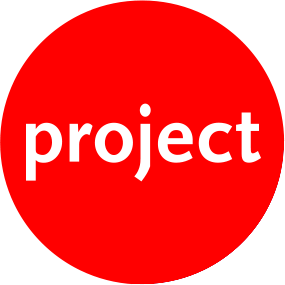Project Arts Centre presents
On 29 March the gallery will host a special event inviting the participating artists who were commissioned by Project Arts Centre as part of ‘The Long Goodbye’ exhibition for a conversation about their works and to share related photographic, moving image, textual and sound materials.
The event will be moderated by Lívia Páldi together with curator and writer Valerie Connor.
Find out more about Active Archive – Slow Institution : The Long Goodbye here.
Credits
Image:
Active Archive – Slow Institution: The Long Goodbye, exhibition view, Project Arts Centre, Dublin, 2019
Photo Ros Kavanagh
Funding
Project Arts Centre is proud to be supported by the Arts Council Ireland and Dublin City Council.
Disclaimer
Brian Hand’s art practice is broadly concerned with creatively exploring and researching events, spaces, agents, and ideas from the past. Hand has made many temporary public works and time-based installations, and often in site-responsive ways. He believes that we can find alternative images in the past that disrupt the naturalness of the present. Hand has worked on several collaborative projects with Orla Ryan.
For ‘The Long Goodbye’ Hand is presenting a new 5 channel video work edited from material which was recorded during the last days of Project in February 1998. Re-engaging with this material, he continues a conversation with his edited single channel video ‘under the one roof’ and with the original silent black & white 16 mm film from the same period. These short films largely explore the interior of the building, its lights and darks, a poetics of demolition, the sounds of its last gig and the materiality of Hi-8 video. Most shots are recorded on a tripod. Video 1 mostly depicts the abandoned theatre guided by the resonating sounds of an LP of Hammond organ. Video 2 presents the technicians’ spaces. Grunge guitar and drums flow through Video 3 with shots of performers and audience. Video 4 is shot mostly in the green room and backstage exits, capturing small details on doors and walls. Video 5 records the culmination of Maurice O’Connell’s Demolishing Project – 39 East Essex Street is Closed, in which the roof is burnt and broken down.
Fergus Kelly is an artist from Dublin working with field recording, soundscape composition, invented instruments and improvisation. He has shown nationally and internationally and received many Arts Council awards. In 2005, Kelly established a CDR label and website, ‘Room Temperature’, as an outlet for his solo and collaborative work, producing the CDs Unmoor (2005), Material Evidence (2006), Bevel (2006) (with David Lacey), A Host Of Particulars (2007), Strange Weather (2007), Leaching The Pith (2008), Swarf (2009), Fugitive Pitch (2009), Long Range (2010), Unnatural Actuality (2014), Quiet Forage (2015) (with David Lacey) and Trembling Embers (2018). Albums on other labels include A Congregation Of Vapours (Farpoint 2012), Neural Atlas (Stolen Mirror 2016), Shot To Shreds(Farpoint 2016), Local Knowledge (Unfathomless 2017), The Map Is Not The Territory (with Max Eastley & Mark Wastell) (Confront 2019).
Miriam O’Connor is a Cork-based photographer and educator. Drawing inspiration from the language and sights and sounds of the everyday, her photographic practice engages with matters which reflect her everyday surroundings and contemplates the manner in which this persuasive medium permeates the way we engage with the world around us. Rather than providing answers, O’Connor positions photography as a tool for posing questions, a medium in itself that commands interrogation. She enjoys the special ambiguity of still images and photography’s capacity to conceal as much as it reveals. Her projects have explored: themes around looking and seeing; the relationship between camera and subject; the circulation and consumption of images; and the complex nature of photographic representation. Her work has been featured in publications including; Camera Austria, Source Photographic Review, The New York Times and The Guardian. Recent exhibits include: ‘Family of No Man’, COSMOS, Arles (2018); ‘Interiors and Other Landscapes’, Sternview Gallery, Cork (2018); ‘RHA Annual Open’, Dublin, (2018); ‘Encountering The Land’, VISUAL, Carlow (2018). Publications include: Attention Seekers (2012); The Legacy Project (2013); and Tomorrow is Sunday (2017). O Connor’s work has recently been selected for FUTURES, a photography platform that pools the resources and talent programmes of leading photography institutions across Europe in order to increase visibility of its selected artists. In addition to her art practice, O’Connor also lectures at Griffith College Dublin.
Tanad Williams a visual artist living and working in Dublin, and graduated in 2012 from the Sculpture Department in NCAD. He works with a variety of mediums on research-based, large-scale and often permanent or semi-permanent works. Williams’ work focuses on human interaction within a landscape, built environment or within a system of language. Taking the form of an intervention or large object, the works are built to a human ratio or domestically familiar architectural size. An intensive amount of study and preparation is required for the production of each piece. Paul Ricoeur, Jacques Derrida and Ray Brassier inform and are pivotal to the practice of producing philosophically engaged architectural interventions, objects or dialogues. The work often takes the form of an epistemologically challenging sentence, fabricated object or situation. Growing up bilingual, Williams has an interest in languages and their structural form and utility ascribed and rewritten over time. Deeply rooted in academic research and linguistic investigation, his practice works toward a final object that is constructed to represent both its material reality and its theoretical conception. The work often presents abstract elements and theories as entry points for the audiences who interact with the objects. Whether a complex architecturally remodeled space, or a simplistic work of art, these deliberate alterations allow the audience to see new functions and potential dynamics emerge from the presented space or artwork.
